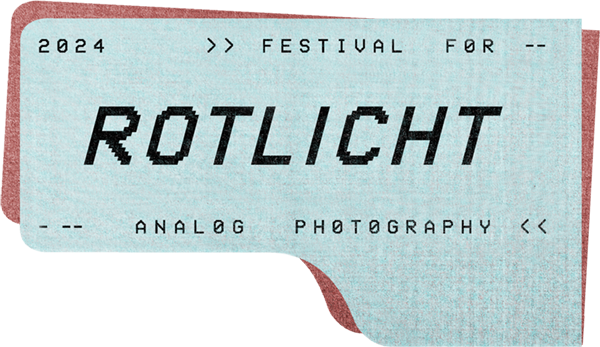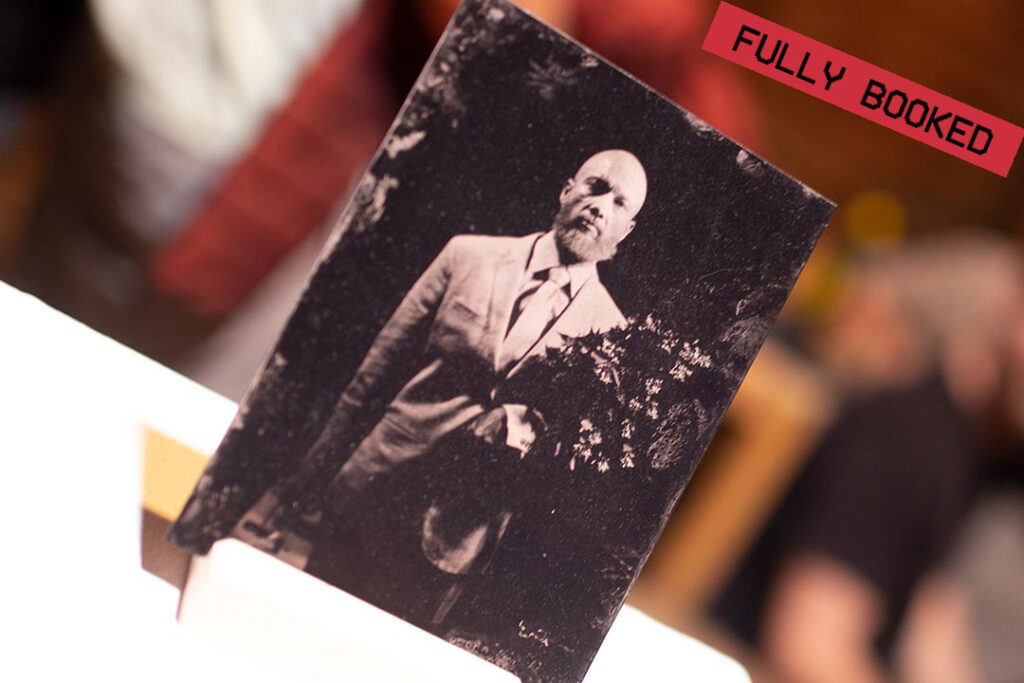Tintypes and ambrotypes are what is known as a positive process and are exposed on an aluminum or glass plate using the collodion wet plate process. In 1856, it was discovered by Hamilton L. Smith, based on the dark field principle that underexposed negatives appear as mirrored positives against a black background. All tintypes and ambrotypes are one of a kind. Our workshop is aimed at anyone interested in trying out this process from the 1860s, and who would like to get a taste of the world of historical photographic processes. It is divided into two parts. The first part includes a short theoretical introduction to the process and the chemistry required. The highlight is exposing and development of an ambrotype together. In the second part, participants will expose their own plates, develop them in our darkroom, and then take home their own images.
Part 1:
- Overview of the history of wet plate collodion photography (negative & positive).
- Introduction to the chemicals needed and their composition
- Workflow and steps of the wet plate collodion process
- Exposing a plate in the wet plate collodion process
- Developing the plate in the darkroom; fixing and washing, and finally
- Varnishing the plate with sandarac or shellac varnish.
Part 2:
- Independent work of the participants under guidance in the wet plate collodion technique.
- Each participant will expose and develop his own plates in 4×5 inch format.
- The own tintypes / ambrotypes can be taken home after final varnishing
The workshop will be led by Dino Rekanovic and Torsten Wieczorek and will take place with at least 2 binding registrations.
Lernen Sie in unserem eintägigen Workshop die faszinierende Welt der Nassplatten-Kollodium-Fotografie mit Ihrem einmaligen Look kennen und machen Sie ihre eigenen Tintypes & Ambrotypes im Studio. Tintypes und Ambrotypes sind ein sog. Positiv-Prozess und werden mit dem Kollodium-Nassplattenverfahren auf einer Aluminium- oder Glasplatte belichtet. 1856 wurde von Hamilton L. Smith aufgrund des Dunkelfeld-Prinzips entdeckt, dass unterbelichtete Negative vor einem schwarzen Hintergrund als spiegelverkehrte Positive erscheinen. Alle Tintypes und Ambrotypien sind Unikate. Unser Workshop richtet sich an alle Interessierten, die gerne einmal dieses Verfahren von 1860 ausprobieren wollen, und in die Welt der historischen Fotografie-Prozesse hineinschnuppern möchten. Er ist in zwei Teile gegliedert. Der erste Teil umfasst die kurze theoretische Einführung in das Verfahren und die benötigte Chemie. Der Höhepunkt ist die gemeinsame Belichtung und Entwicklung einer Ambrotypie. Im zweiten Teil belichten die Teilnehmer ihre eigenen Platten, entwickeln sie in unserer Dunkelkammer und können dann ihre eigenen Bilder mit nach Hause nehmen.
Teil 1:
- Überblick über die Geschichte der Nassplatten-Kollodium-Fotografie (Negativ u. Positiv)
- Vorstellung der benötigten Chemikalien und ihrer Zusammensetzung
- Ablauf und Schritte des Nassplatten-Kohlodium-Prozesses
- Gemeinsame Belichtung einer Platte im Nassplatten-Kollodium-Verfahren
- Entwickeln der Platte in der Dunkelkammer; Fixieren und Wässern, sowie abschließend
- Lackieren der Platte mit Firnis und Lacken
Teil 2:
- Selbständiges Arbeiten der Teilnehmer unter Anleitung in der Nassplatten-Kollodium Technik
- Jeder Teilnehmer belichtet und entwickelt seine eigene Platten im Format 4×5 Zoll
- Die eigene Tintypes / Ambrotypes können nach dem finalen Lackieren mit nach Hause genommen werden
Der Workshop wird von Dino Rekanovic und Torsten Wieczorek geleitet und findet bei mindestens 2 verbindlichen Anmeldungen statt.

